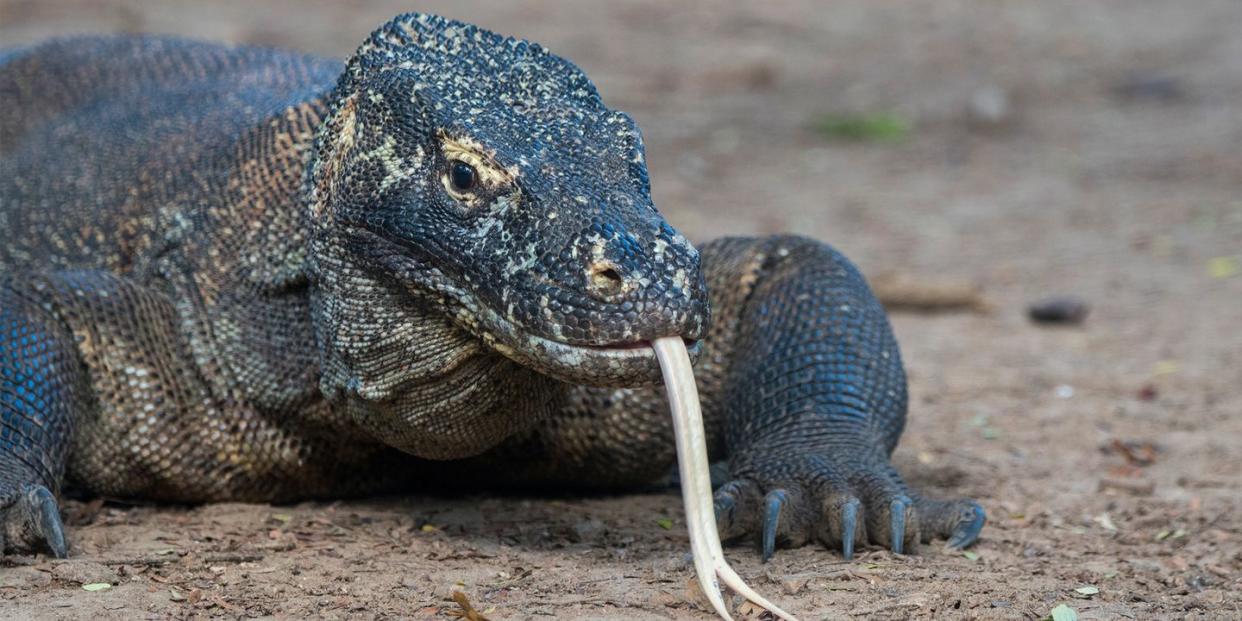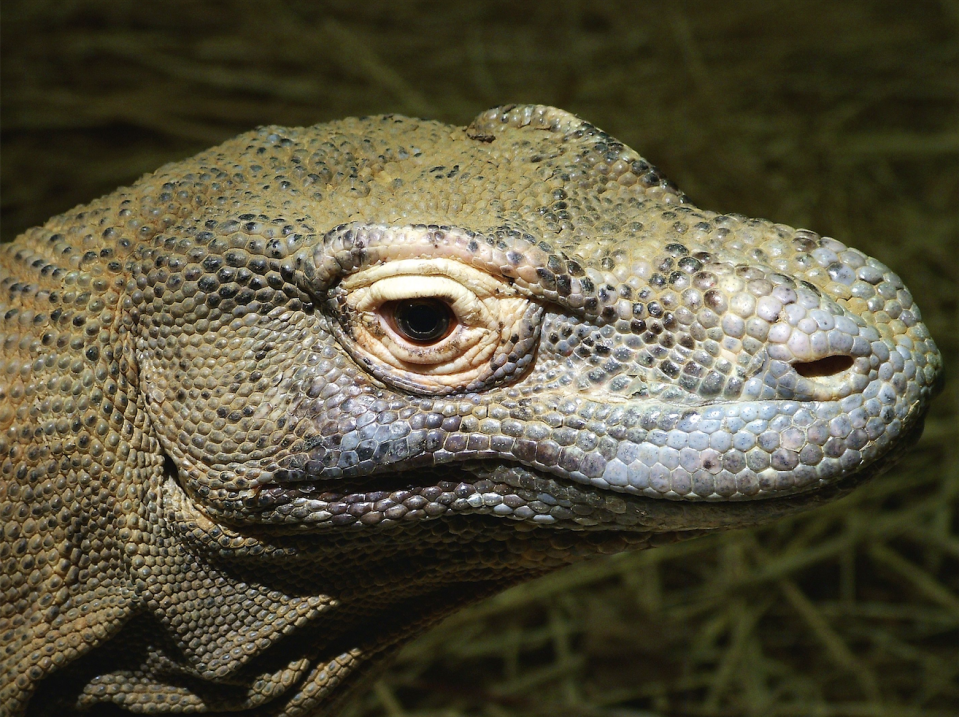Komodo Dragons Are the Toughest Lizards on Earth

Researchers at the University of Texas at Austin have recently discovered that komodo dragons grow osteoderms in their skin that closely resembles chain mail.
Even more interesting is that komodos grow four different shapes of osteoderms when lizards typically have one or two different shapes and tend to have less osteoderm coverage than komodo dragons.
You've probably heard of the fearsome komodo dragon, a monitor lizard belonging to the Varanidae family, known for their lethal bites and incredible strength and speed. Komodo's have a fearsome reputation because, well, they've earned it.
This is a species that will cannibalize its young and full-grown adults if food is scarce enough. Komodo's can grow up to 10 feet in length and weigh up to a whopping 300 pounds. But all that pales in comparison to the fact that these guys have chain mail-like osteoderms (bony deposits)—essentially, a coat of armor—under their scales making them the most badass lizards on Earth.
Researchers at the University of Texas at Austin (UT Austin) were curious about why komodo's grow this defensive coat of armor when the lizards don't have to worry about other animals preying on them. Turns out, komodos need protection from other komodos—scans revealed that the chain mail-esque armor isn't present in baby dragons indicating that osteoderms aren't present until a komodo reaches adulthood.

Although scientists have long known about the osteoderms in komodo dragons, the arrangement of the tiny bones remained a mystery "since the skin is the first organ removed when making a skeleton," per UT Austin's news blog.
"Most monitor lizards just have these vermiform (worm-shaped) osteoderms, but this [species] has four very distinct morphologies, which is very unusual across lizards," said Jessica A. Maisano, who led the research published in The Anatomical Record.
UT Austin researchers scanned dragon specimens from the Fort Worth Zoo and the San Antonio Zoo, who provided the team with a 19-and-a-half year old adult komodo and a two day old komodo, respectively. A high-resolution x-ray was used to "reveal the interiors of [the] specimens in great detail."

Where lizards typically have one or two varying patterns or shapes of osteoderms, komodo's have four: rosette, platy, dendritic, and vermiform.
Maisano et al. report that there are a few areas where osteoderms were not present on an adult komodo, including the area surrounding "the eyes, nostrils, mouth margins and pineal eye, a light-sensing organ on the top of the head."

"Specimens like this—a large, mature individual of a rare and sexy taxon—don't come along very often. Museums typically don't have the space to store such large specimens intact, so they skeletonize them," Maisano tells Popular Mechanics.
The team was able to scan the adult komodo, "revealing the spectacular array of osteoderms, which had oft been spoken of in Komodo dragons, but never actually seen," Maisano says.
As for any future applications for this kind of biological protective structure, Maisano mentions that humans have used actual chain mail for protection dating back several centuries, so the possibilities for newer and more advanced applications remain open.
You Might Also Like

